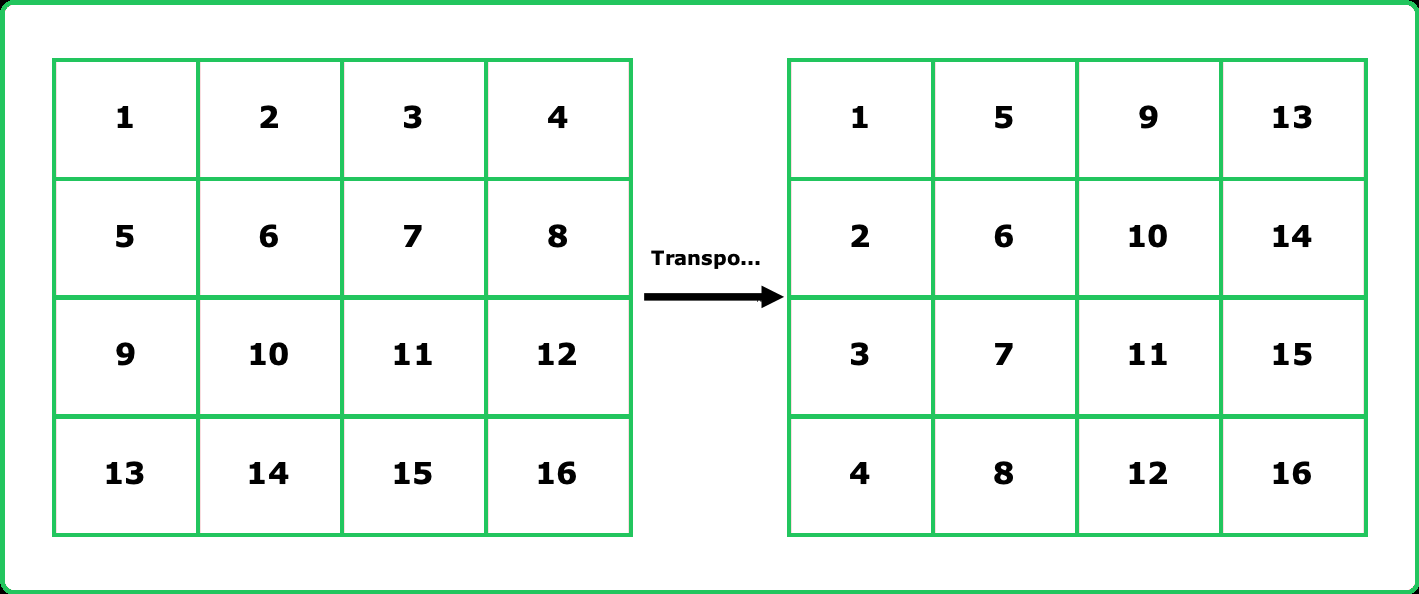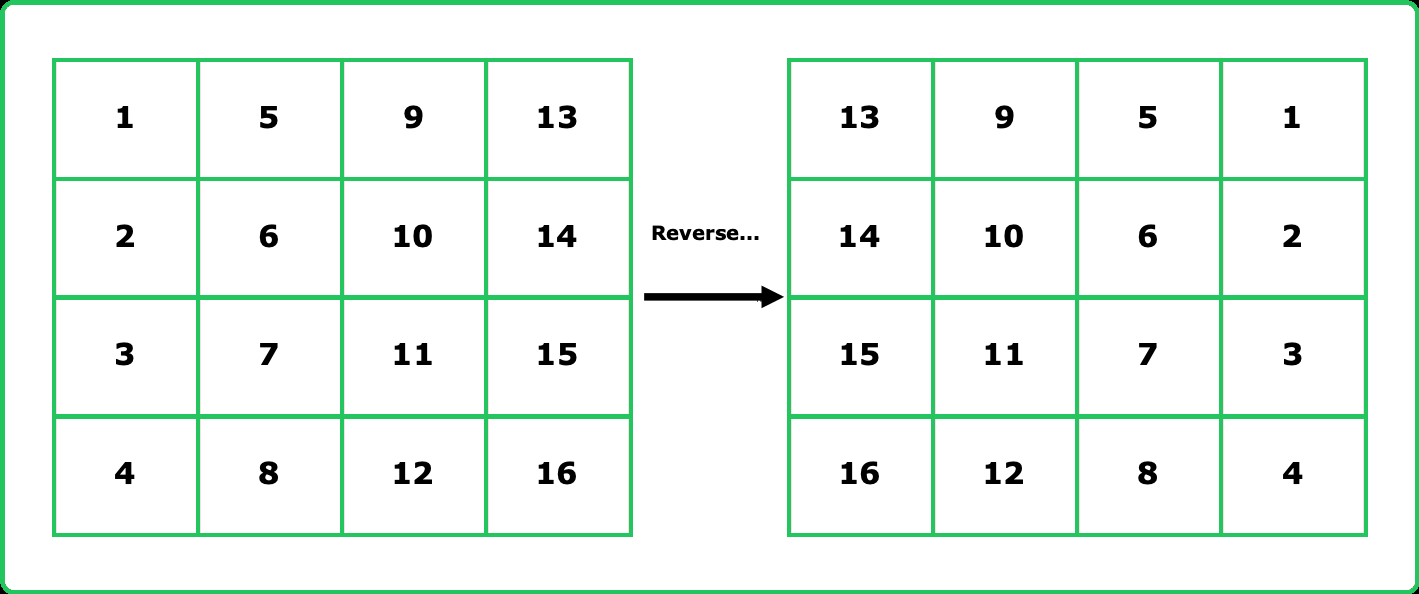Rotate matrix by 90 degrees
Arrays
FAQs(Medium)
Medium
Given an N * N 2D integer matrix, rotate the matrix by 90 degrees clockwise.
The rotation must be done in place, meaning the input 2D matrix must be modified directly.
Examples:
Input: matrix = [[1, 2, 3], [4, 5, 6], [7, 8, 9]]
Output: matrix = [[7, 4, 1], [8, 5, 2], [9, 6, 3]]
Input: matrix = [[0, 1, 1, 2], [2, 0, 3, 1], [4, 5, 0, 5], [5, 6, 7, 0]]
Output: matrix = [[5, 4, 2, 0], [6, 5, 0, 1], [7, 0, 3, 1], [0, 5, 1, 2]]
Input: matrix = [[1, 1, 2], [5, 3, 1], [5, 3, 5]]
Constraints
- n == matrix.length.
- n == matrix[i].length.
- 1 <= n <= 100.
- -104 <= matrix[i][j] <= 104
Hints
- Swap elements such that matrix[i][j] becomes matrix[j][i]. Reverse the order of elements in each row to complete the rotation.
- Alternatively, rotate the matrix in layers, starting from the outermost layer and moving inward. For each layer, shift elements in groups of four.
Company Tags
Snowflake
Epic Games
Freshworks
Bungie
Robinhood
Boston Consulting Group
OYO Rooms
Philips Healthcare
Ernst & Young
Visa
Lyft
Texas Instruments
McKinsey & Company
Chewy
DoorDash
Goldman Sachs
Pinterest
Wayfair
Roblox
Ubisoft
Splunk
Target
Swiggy
American Express
Intel
TCS
Cognizant
Accenture
Infosys
Capgemini
Wipro

